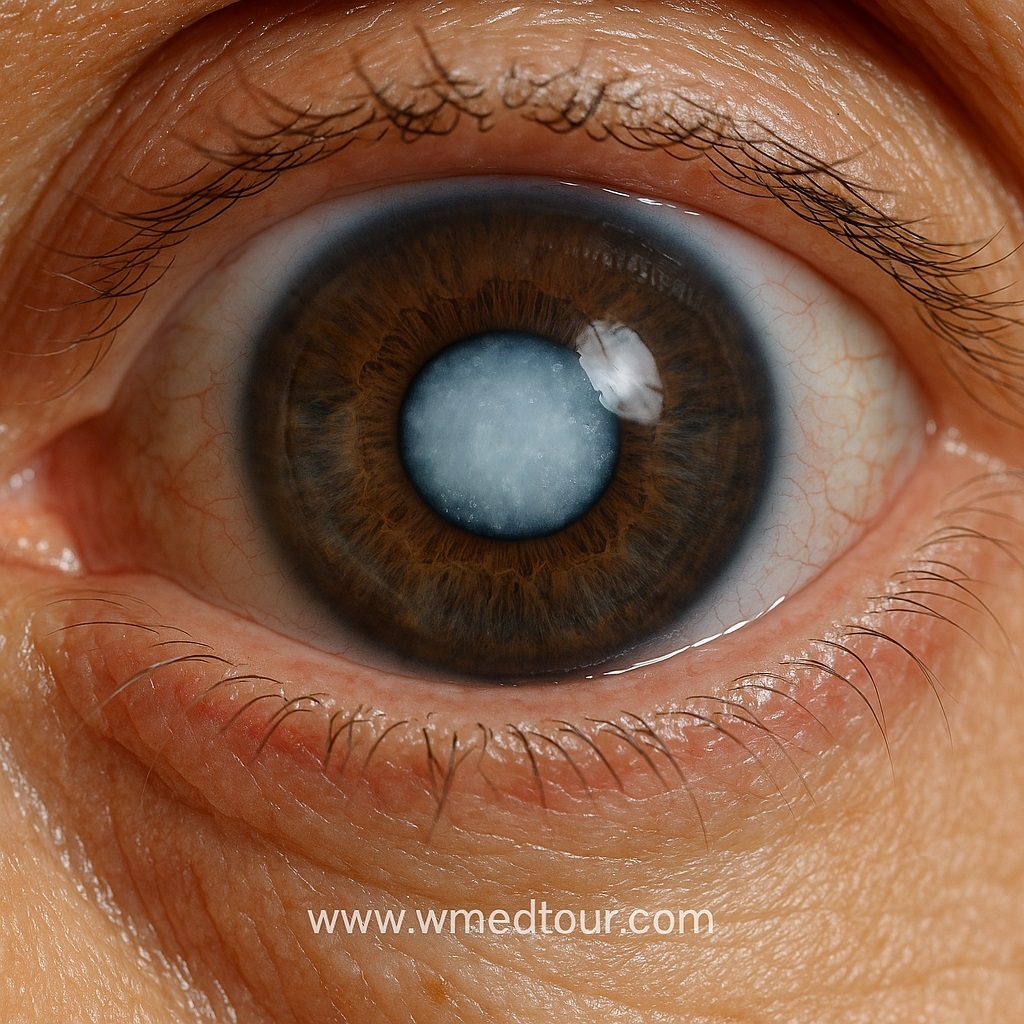ICCE Cataract Surgery: What You Need to Know in a Modern World
Understanding the traditional **ICCE Cataract** procedure and how it compares to today’s advanced options for vision correction.
The journey to clearer vision often begins with understanding your treatment options. While modern medicine has made remarkable strides, it is helpful to look at the foundations of eye surgery to appreciate just how far we’ve come. For instance, the **ICCE Cataract** procedure, or Intracapsular Cataract Extraction, was once the gold standard for restoring vision. This blog post will explore what this traditional procedure entails, how it compares to the techniques used today, and why it is essential to seek the most advanced care for your eyes. Ultimately, by learning about the past, you can make a smarter choice for your future.
What Is ICCE Cataract Surgery?
The **ICCE Cataract** procedure is a surgical method for removing a cataract-clouded lens from the eye. It involves a large incision in the cornea, allowing the surgeon to remove the entire lens, including its surrounding capsule. This is a key distinguishing feature from modern methods that leave the capsule intact. The procedure was developed in the late 18th century and refined throughout the 20th century. Consequently, it has been largely replaced by more sophisticated and safer techniques. Yet, it remains a critical part of ophthalmic history and is still taught in medical schools to provide a comprehensive understanding of eye surgery.
In contrast to modern surgeries, the **ICCE Cataract** approach did not leave any part of the natural lens behind. This meant that the surgeon would then place a synthetic lens, or Intraocular Lens (IOL), in front of the iris, as there was no capsule to support it. Furthermore, the large incision required multiple stitches to close, which contributed to a longer and more complicated recovery period. The procedure was a significant medical breakthrough in its time, giving millions of people the chance to see again, but its limitations paved the way for the innovations we see today.
The Surgical Process: A Look at ICCE
Although modern methods are preferred, understanding the process of Intracapsular Cataract Extraction provides valuable context. The surgery required meticulous skill and was performed under a local or general anesthetic. The patient would be awake but would not feel any pain. The surgeon would make an incision that was much larger than what is used today, typically extending over half the circumference of the cornea. This was necessary to allow for the complete removal of the lens. The entire lens and its capsule were then extracted as a single unit using specialized tools. Following the removal, an IOL was implanted, and the incision was closed with stitches. This process was complex, and consequently, it had a longer surgical time and a higher risk of complications. For a deeper understanding of cataract development, you can visit the National Eye Institute.
Risks and Recovery
The **ICCE Cataract** procedure, because of its invasive nature, had several potential risks. These included a higher chance of retinal detachment, vitreous loss, and post-operative astigmatism. The recovery period was also much more extensive, often requiring several weeks to a few months for the eye to heal fully. Patients would need to use eye drops, wear an eye shield, and avoid strenuous activities for a prolonged period. This is a stark contrast to modern surgeries, where patients can often resume most normal activities within a day or two. While it was effective, it was a major surgery with significant downtime. This is why the medical community has moved on to safer, more efficient alternatives. To learn more about patient safety in surgical procedures, you can review the guidelines from the World Health Organization (WHO).
ICCE vs. Phacoemulsification: The Modern Standard
Today, **ICCE Cataract** has been almost entirely replaced by Phacoemulsification (Phaco), which is the most widely performed cataract surgery globally. This modern technique uses a small, high-frequency ultrasound probe to break the cataract into tiny pieces. These fragments are then gently suctioned out through a very small incision, typically less than 3 millimeters. Subsequently, a flexible IOL is inserted through the same tiny opening. This procedure is less invasive and requires no stitches. For this reason, the recovery is much faster, and the risks of complications are significantly lower. Below is a detailed comparison of the two methods.
| Feature | ICCE (Intracapsular Cataract Extraction) | Phacoemulsification (Phaco) |
|---|---|---|
| Incision Size | Large, up to 12 mm | Small, typically 2-3 mm |
| Surgical Method | Whole lens removed with capsule | Lens broken up with ultrasound and suctioned out |
| Stitches | Required | Not required |
| Recovery Time | Weeks to months | Days to one week |
| Risk of Complications | Higher (e.g., retinal detachment, vitreous loss) | Lower (e.g., infection, swelling) |
Medical Tourism for Cataract Surgery: Why It’s a Top Choice
For many individuals, the high cost of medical procedures in their home country makes quality care inaccessible. This is where medical tourism comes in, offering a perfect solution. Countries like Iran, India, and Turkey have become world-renowned for their advanced ophthalmology departments, state-of-the-art hospitals, and highly skilled surgeons. As a matter of fact, many patients from the United States, Europe, and the Middle East now travel to these nations for various eye procedures. These destinations provide a unique combination of exceptional medical quality, affordability, and the opportunity to experience a new culture during recovery.
Comparing Top Medical Tourism Destinations
When selecting a destination for cataract surgery, it’s important to consider factors like the quality of care, cost, and logistics. Below, you will find a table comparing key aspects of two popular medical tourism hubs. For more information on why medical tourism is a growing trend, you can read more at wmedtour.com/category/articles/.
| Feature | Iran | India |
|---|---|---|
| Quality of Care | Very High, with internationally trained surgeons and modern hospitals. | Excellent, with numerous JCI and NABH accredited hospitals. |
| Cost | Extremely competitive, often the most affordable option. | Very competitive, with a wide range of pricing options. |
| Technology | Advanced diagnostic and surgical equipment available. | State-of-the-art facilities with the latest technologies. |
| Accessibility | Requires specific visa arrangements, but very patient-friendly. | Easy access with numerous international flights; English is widely spoken. |
When you are looking for the right destination, it is best to consult with a professional medical tourism facilitator. For this purpose, you can contact us to discuss your specific needs and find the ideal solution.
Preparing for Your Cataract Surgery
If you’ve decided to move forward with cataract surgery, preparation is key. This will ensure your procedure goes smoothly and your recovery is as quick as possible. This is a general guide to help you prepare, but always follow your doctor’s specific instructions.
- Initial Consultation and Medical Evaluation: Your journey begins with a detailed eye examination. An ophthalmologist will assess your vision, measure your eye’s size and shape, and recommend the best surgical approach and IOL for you. This is where you can ask questions and address any concerns.
- Pre-operative Instructions: Your doctor will provide specific instructions for the days leading up to your surgery. This may include stopping certain medications, avoiding food or drink before the procedure, and using prescribed eye drops. It’s crucial to follow these instructions precisely.
- Arranging Transportation and Aftercare: Since you will not be able to drive immediately after the surgery, arrange for a friend or family member to take you home. You should also plan for someone to help you with basic tasks for the first day or two.
- The Day of Surgery: On the day of the procedure, follow all instructions carefully. Wear comfortable clothing, arrive on time, and remember to bring any necessary paperwork. You will receive a local anesthetic to ensure you are comfortable throughout the surgery.
- Post-operative Care: After the surgery, you will receive post-operative care instructions, including how to use eye drops, protect your eye, and recognize signs of complications. Attending follow-up appointments is crucial for a successful recovery. The National Eye Institute also has great resources on what to expect after surgery.
Frequently Asked Questions
To help you better understand the nuances of cataract surgery, we have compiled a list of frequently asked questions. We want you to feel fully informed and confident in your healthcare decisions. For a deeper understanding, please consult an ophthalmologist.
1. What is an ICCE cataract procedure?
2. What are the common symptoms of a cataract?
3. How does ICCE differ from Phacoemulsification?
4. Is the ICCE procedure still performed today?
5. How long does ICCE cataract surgery take?
6. What is the recovery time for ICCE?
7. What are the risks of ICCE compared to Phaco?
8. What is the difference between an ophthalmologist and an optometrist?
9. What is an IOL and how is it used in cataract surgery?
10. Is cataract surgery painful?
11. Can a cataract come back after surgery?
12. What is the best age for cataract surgery?
13. How long do I need to stay in the hospital for cataract surgery?
14. What is the cost of cataract surgery in different countries?
15. Is it safe to travel for cataract surgery?
16. Can I get cataract surgery for both eyes at the same time?
17. What are the common symptoms of a cataract?
18. Can a cataract be treated with medication?
19. What is astigmatism and can cataract surgery correct it?
20. What is the long-term outlook after cataract surgery?
Ready to start your journey to clearer vision? Explore Your Options Today




